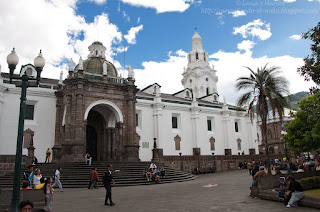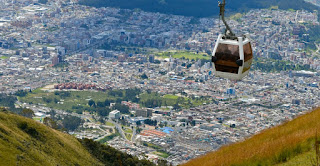ORIGIN OF THE PARTY
The Quito
festivities are a relatively new event in the calendar of both Ecuador and the
city itself. The occasion commemorates the Spanish foundation of the city of
San Francisco de Quito on December 6, 1534, under the command of the Spaniard
Sebastián de Benalcázar on the remains of the second capital (or the northern
capital) of the Inca Empire, formerly the capital of the legendary Kingdom of
Quito, the stronghold of the Quitu-Caras. As recently as 1950, December 6 was
merely celebrated with a parade and a low-key civic event in the city followed
by the Formal Session of the Municipality of Quito.
Then, at the beginning of the 1960's, following an initiative by the evening newspaper “Ultimas Noticias”, the celebrations suddenly blossomed and became a 3-week event packed with events eagerly awaited throughout the year. This event has now become the biggest celebration in Quito.
Then, at the beginning of the 1960's, following an initiative by the evening newspaper “Ultimas Noticias”, the celebrations suddenly blossomed and became a 3-week event packed with events eagerly awaited throughout the year. This event has now become the biggest celebration in Quito.
The Quito
festivities begin in the last week of November, and reach their climax during
the period December 1 to 6 in which the whole city becomes a non-stop party.
FOOD
Pristine,
aplanchados, quesadillas, figs with cheese, ice pan and you can taste until 6
December.
Canelazo:
Ingredients:
8 cinnamon sticks
4-5 cloves
4 cup water
1 cup brown sugar
1 cup pulp naranjilla
The skin of an orange (only the surface, not the white part)
Brandy (white rum if no brandy)
Instructions:
In a saucepan, boil all the ingredients except the brandy.
A boiling again, cook for another 5 minutes.
Remove the mixture from the flame and sift the liquid. Return it to the caller (in low) to keep warm. Get rid of spices.
In a glass, serve a little brandy (1/2 oz -.. 1 oz depending on your taste and tolerance), followed by boiled mixture. Mix.
Serve immediately.
MUSIC
Traditional songs at parties in Quito especially are:
TRADITIONS AND ACTIVITIES
- The proclamation
- Parade fellowship in the north and south of the city
- Wood Car Racing
- Typical food festivals
- The traditional card game "40"
- Interbarriales Games
- Festival parade
- People Bands
- Tours goats
- Bullfight












































